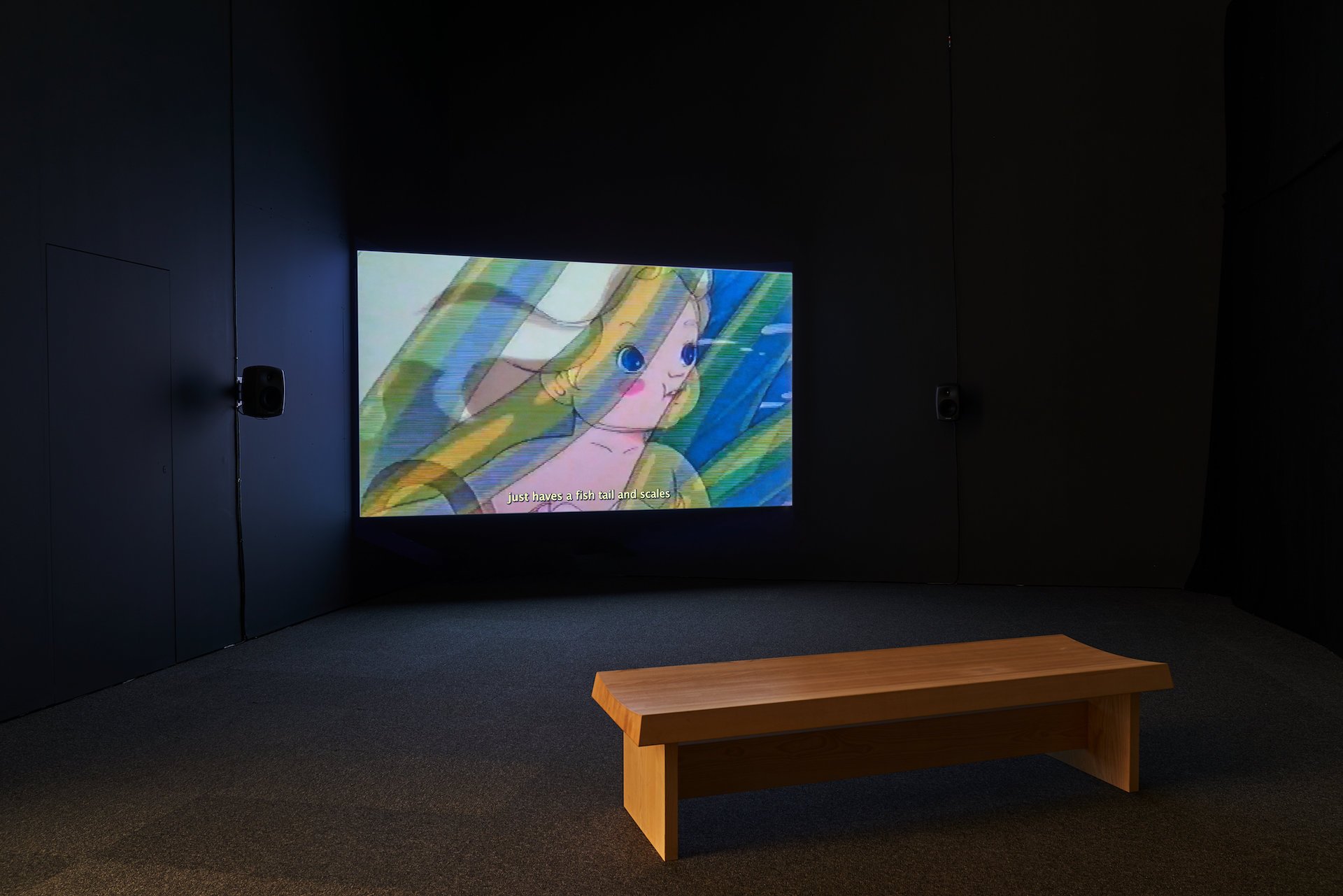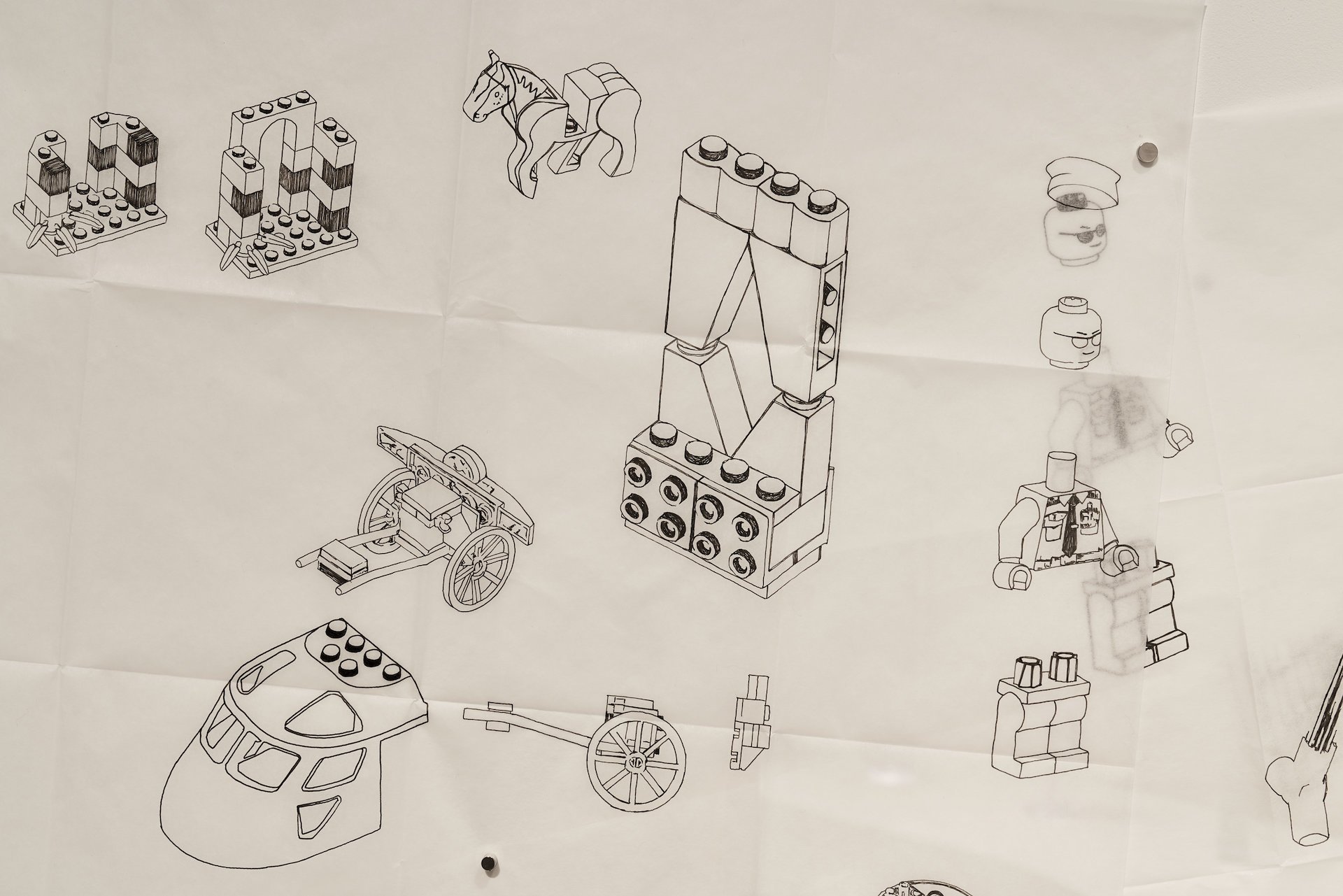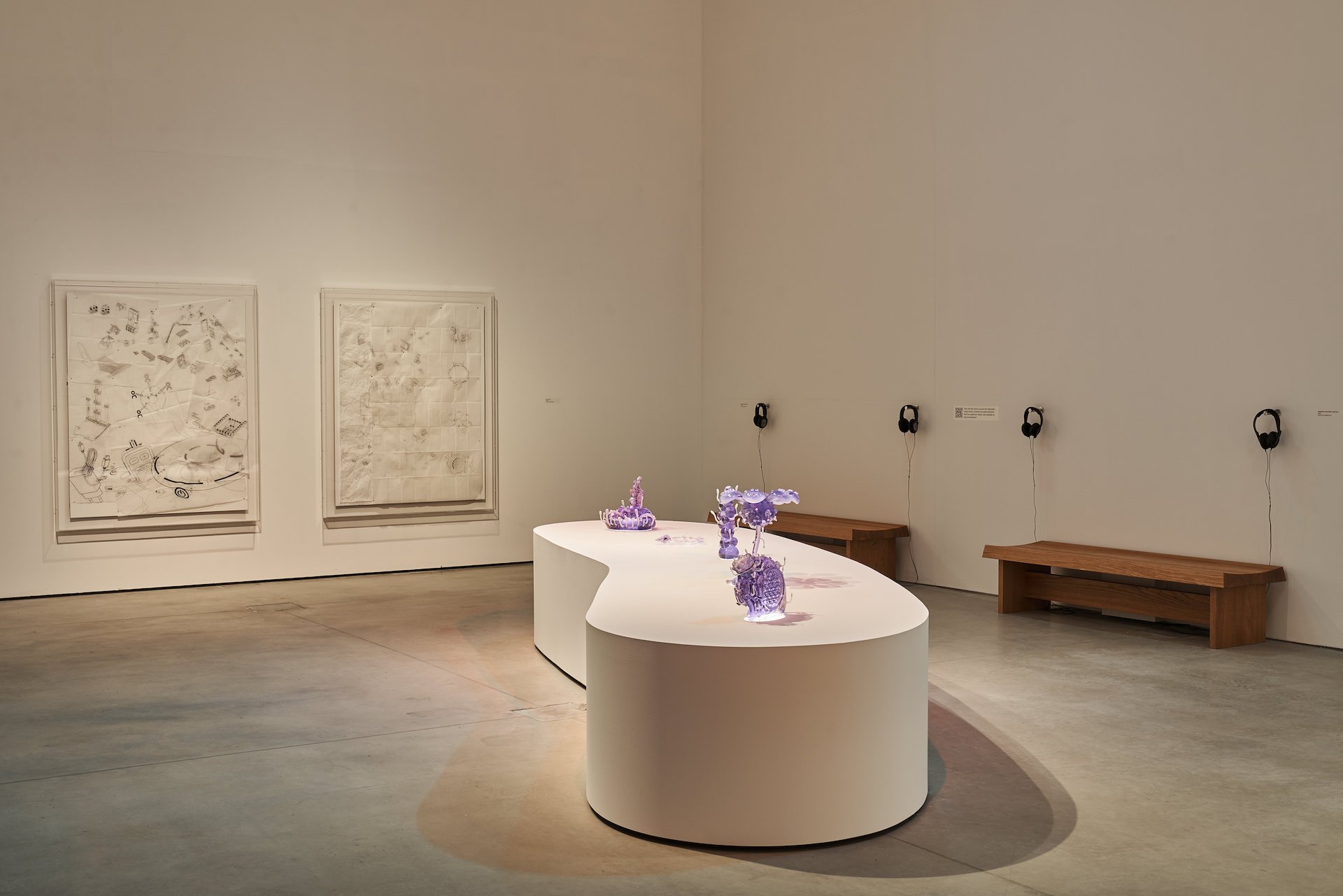asweetsea explores what it means to communicate. Curated by Sarah Hayden, this first solo exhibition by Liza Sylvestre outside of the U.S comprises newly commissioned moving image, drawings, sculptures and audio. These playful, probing works investigate how we make, share and access meaning together.
Liza Sylvestre is interested in how disruptions and complications of normative sensory hierarchies can function as conceptual and aesthetic material. She conceives of her work as a site to share experience and to form new ways of understanding the intersection of senses, access, and learned systems of communication. As an artist who is deaf, and whose child and partner are both hearing, Sylvestre tries to locate where her disability lives within their family structure. Through her practice, Sylvestre investigates the complicated edges of distinctions. What does hearing mean? What does deafness mean? What does disability mean? Where do these things begin and end?
In a new film, Sylvestre has collaborated with her 6-year old child to reimagine an animated cartoon from the artist’s own childhood. Sylvestre’s strong memories of the Sweet Sea cartoon evolved at a time when she had a very different sensory makeup. These memories were intensified by the bond she experienced with the Sweet Sea doll: a toy that accompanied her through traumatic medical interventions. Thirty years on, the cartoon’s ‘80s aesthetic is intensely nostalgic, at once familiar and blurred. Now, as her hearing child relays their experience of the film, Sylvestre reworks the animated material to fit their description.
In her ongoing Captioned series, Sylvestre intervenes upon found films, introducing a layer of essayistic reflection in place of the captions without which the film’s sound-world is inaccessible. In asweetsea, captioned conversations between parent and child capture both the sound and the emotional textures of their interaction. Vividly coloured and shimmering with undersea motion, their remake engages generational experiences of disability, interdependence, sensory memory, communication, and time.
To accompany the film, Sylvestre has created clear resin sculptures and diagrammatic drawings. In the Memorabilia sculptures, memories of Sweet Sea toys amalgamate with components from contemporary cochlear implants. In snapping together, they create fantastical new forms. Prototypes for future possibilities, these undersea artefacts suggest modalities of sensing and imagining as yet unknown. Translucent but ambiguous, Sylvestre’s sculptures enact another kind of material, cross-modal translation.
Instructions for the construction of Lego models overlap on tracing paper with diagrams for the assembly of cochlear implants in Sylvestre’s new Parts drawings. Systems are layered, one on top of the other. Visual schemas become meshed. The structure of language within a family is made visible as an investigation of overlapping systems.
Silent screens with captions and a separate audio piece offer alternative routes of entry to an artist’s audio tour of asweetsea. Distributed throughout the gallery space, and available in multiple formats, Sylvestre’s interpretative guide to the exhibition draws attention to the role of description in creating access.
Liza Sylvestre is a multimedia artist and Research Assistant Professor within the College of Fine and Applied Arts at the University of Illinois Urbana Champaign where she has co-founded the initiative Crip*- Cripistemology and the Arts. Her work has been shown internationally at venues including the Plains Art Museum (Fargo), Weisman Art Museum (Minneapolis), Roots & Culture (Chicago), Soap Factory (Minneapolis), Soo Visual Arts Center (Minneapolis), John Hansard Gallery (Southampton), ARGOS (Brussels), and MMK (Frankfurt). Sylvestre has been the recipient of both an Artists Initiative and Arts Learning grant from the Minnesota State Arts Board, a fellowship through Art(ists) on the Verge, a VSA Jerome Emerging Artist Grant, an Art Works grant from the NEA, and a fellowship from the Kate Neal Kinley Foundation and, most recently, she has been named a 2021 Joan Mitchell Fellow. She has been artist-in-residence at the Weisman Art Museum and the Center for Applied and Translational Sensory Science (CATSS). In 2019 she received a Citizens Advocate Award from the Minnesota Commission of the Deaf, DeafBlind, and Hard of Hearing (MNCDHH). Sylvestre’s work has been written about in numerous publications and books including Art in America, Mousse Magazine, Ocula Magazine, Art Monthly, and SciArt Magazine.






